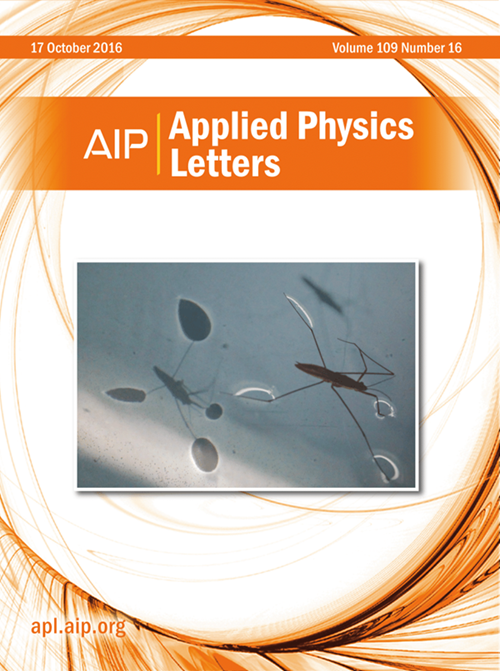W(110)上Fe层中自旋相关等离子体激元的激发及其电子发射衰变
IF 3.5
2区 物理与天体物理
Q2 PHYSICS, APPLIED
引用次数: 0
摘要
在W(110)衬底上的5 ML Fe薄膜上,以不同的一次能量和72°的入射角,测量了自旋极化电子激发的二次电子发射光谱。在入射光束的两个自旋极化下测量每个光谱:偏振矢量与Fe膜的磁化矢量平行和反平行,Yup(E)和Ydown(E)。利用这两个光谱,可以计算出不对称谱为A(E) = (Yup(E)−Ydown(E))/(Yup(E) + Ydown(E))。我们在能量为(18-19)eV的不对称光谱中观察到真正的二次发射特征。我们认为造成这一特征的机制涉及铁膜中自旋相关的等离子激元激发及其随后通过电子发射的衰变。本文章由计算机程序翻译,如有差异,请以英文原文为准。
Spin-dependent plasmons excitation in Fe layer on W(110) and their decay via electron emission
Secondary electron emission spectra excited by spin-polarized electrons from a 5 ML Fe film on W(110) substrate were measured at the specular reflection geometry with the incident angle of 72° and various primary energies. Each spectrum was measured at two spin polarizations of the incident beam: with a polarization vector parallel and antiparallel to the magnetization vector of the Fe film, Yup(E) and Ydown(E). Using these two spectra, the asymmetry spectrum can be calculated as A(E) = (Yup(E) − Ydown(E))/(Yup(E) + Ydown(E)). We observed a true secondary emission feature in the asymmetry spectra at the energy (18–19) eV. We suggest that the mechanism responsible for that feature involves a spin-dependent plasmon excitation in the Fe film with its subsequent decay via electron emission.
求助全文
通过发布文献求助,成功后即可免费获取论文全文。
去求助
来源期刊

Applied Physics Letters
物理-物理:应用
CiteScore
6.40
自引率
10.00%
发文量
1821
审稿时长
1.6 months
期刊介绍:
Applied Physics Letters (APL) features concise, up-to-date reports on significant new findings in applied physics. Emphasizing rapid dissemination of key data and new physical insights, APL offers prompt publication of new experimental and theoretical papers reporting applications of physics phenomena to all branches of science, engineering, and modern technology.
In addition to regular articles, the journal also publishes invited Fast Track, Perspectives, and in-depth Editorials which report on cutting-edge areas in applied physics.
APL Perspectives are forward-looking invited letters which highlight recent developments or discoveries. Emphasis is placed on very recent developments, potentially disruptive technologies, open questions and possible solutions. They also include a mini-roadmap detailing where the community should direct efforts in order for the phenomena to be viable for application and the challenges associated with meeting that performance threshold. Perspectives are characterized by personal viewpoints and opinions of recognized experts in the field.
Fast Track articles are invited original research articles that report results that are particularly novel and important or provide a significant advancement in an emerging field. Because of the urgency and scientific importance of the work, the peer review process is accelerated. If, during the review process, it becomes apparent that the paper does not meet the Fast Track criterion, it is returned to a normal track.
 求助内容:
求助内容: 应助结果提醒方式:
应助结果提醒方式:


